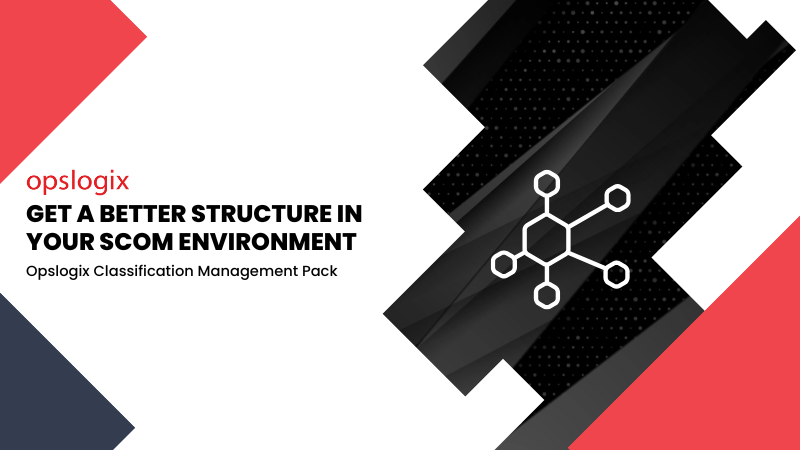Get a better structure in your SCOM environment with the Opslogix Classification Management Pack
by Jonas Lenntun, on Jun 30, 2025 3:53:36 PM

Alerts in SCOM can easily become overwhelming, making your environment feel noisy and unstructured. The real challenge is how you can get the right amount of alerts to the right people, at the right time.
The Opslogix Classification Management Pack includes features like tiered classification levels, dynamic grouping, and extended tagging. This gives you the ability to organize and structure your SCOM monitoring setup.
In this blog post, we will go through more of the benefits and features in detail.
Categorize according to your business
Categorizing is important in order to be able to prioritize how and when alerts should be handled. Most organizations categorize their systems by business impact, such as:
- Mission-critical systems (monitored 24/7)
- Business-critical systems (monitored during office hours)
- Development or test environments (monitored with lower priority)
For example, a production system might require immediate attention at any hour, while a test system alert can wait until the next business day.
Alert control using severity and priority
SCOM offers two primary alert properties that can help manage response levels:
- Alert severity: Information, warning, or critical
- Alert priority: Low, medium, or high
Severity indicates how serious an issue is from a technical perspective, and priority reflects the business value of the affected system. By combining these, you can tailor your response workflow.
In an example scenario, we have a business-critical SQL server that runs reporting during office hours. If a core service fails and triggers a critical/high alert, the system can escalate the issue immediately, even outside of business hours. Meanwhile, a test server in a development environment might trigger a critical/low alert for the same issue, but the alert would be deferred until normal hours.
Categorizing alerts this way allows teams to prioritize better, based on both technical urgency and business impact.
Extended classification properties
The Opslogix Classification Management Pack adds new properties to objects in the SCOM database. These include:
- Classification level (from E to A)
- Business unit
- Site or region
- Environment
- Tags
- Operated by
These properties can be set using a built-in SCOM task or imported in bulk via PowerShell. Once assigned, they enable better filtering, alert routing, and grouping across your environment.
Dynamic grouping for smart targeting
Based on their classification, objects are automatically included in dynamic groups. These groups can be used for:
- Assigning overrides
- Adjusting alert thresholds
- Targeting specific notifications
This way you can tailor your monitoring strategy without having to manually manage static groups.
Supports SCOM object types
The Classification Management Pack supports classifications for a wide range of monitored objects, including:
- Windows computers
- UNIX/Linux computers
- Network devices
You can use this to apply a consistent classification approach across your entire infrastructure.
Summary
The Opslogix Classification Management Pack helps you to structure your SCOM environment. By aligning alert behavior with your needs and utilizing classification- and grouping features, it helps you stay organized.
Whether you are monitoring a handful of systems or managing a global infrastructure, this Management Pack helps you make sure that alerts are not just seen, but handled at the right time, by the right team.
Are you interested in learning more? The Opslogix Classification Management Pack is a part of our Digital Operations Framework, which is included in our Monitoring as a Service.


